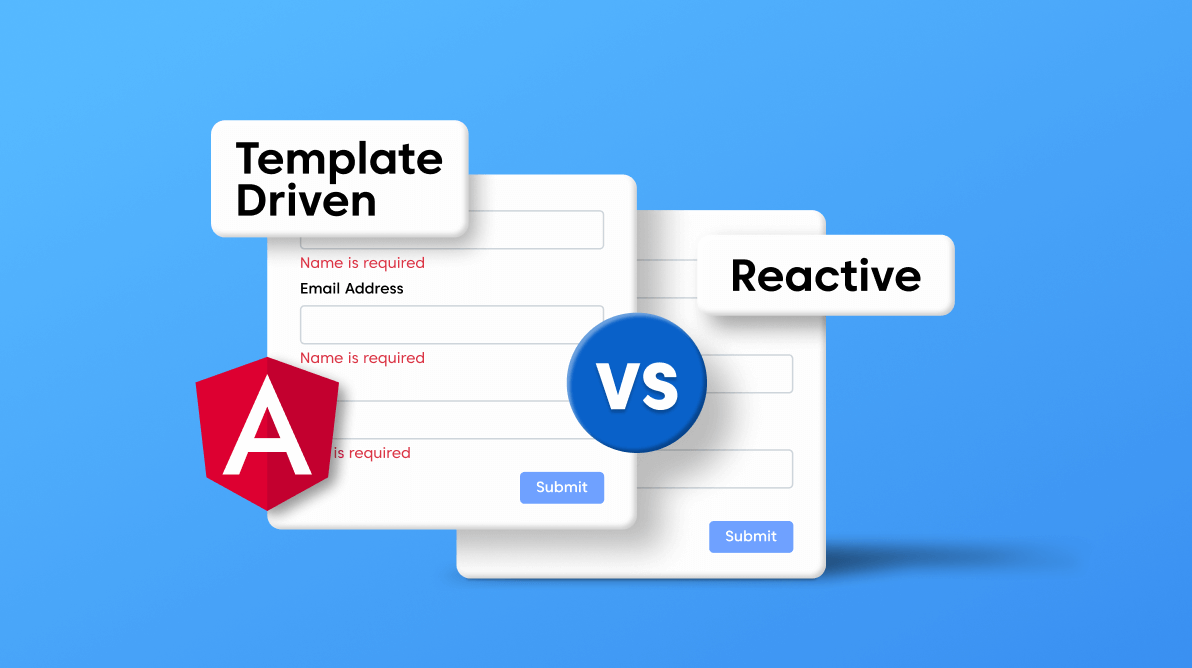Introduction
Angular Reactive Forms provide a model-driven approach to handling form inputs, offering more robust and scalable form handling in Angular applications. This guide will walk you through the fundamentals of Angular Reactive Forms, complete with code samples to get you started.
What are Angular Reactive Forms?
Angular Reactive Forms are a powerful and flexible way to handle form inputs in Angular applications. They allow you to create complex forms with custom validation and reactive behavior, ensuring a seamless user experience.
Setting Up Your Angular Project
To get started, ensure you have Angular CLI installed. If not, install it using the following command:
npm install -g @angular/cliCreate a new Angular project:
ng new angular-reactive-forms
cd angular-reactive-formsAdd the ReactiveFormsModule to your application by importing it in your app.module.ts:
import { ReactiveFormsModule } from '@angular/forms';
@NgModule({
declarations: [
AppComponent,
// other components
],
imports: [
BrowserModule,
ReactiveFormsModule,
// other modules
],
providers: [],
bootstrap: [AppComponent]
})
export class AppModule { }Creating a Reactive Form
Create a new component for your form:
ng generate component contact-formIn the contact-form.component.ts, import FormBuilder and FormGroup:
import { Component } from '@angular/core';
import { FormBuilder, FormGroup } from '@angular/forms';
@Component({
selector: 'app-contact-form',
templateUrl: './contact-form.component.html',
styleUrls: ['./contact-form.component.css']
})
export class ContactFormComponent {
contactForm: FormGroup;
constructor(private fb: FormBuilder) {
this.contactForm = this.fb.group({
name: [''],
email: [''],
message: ['']
});
}
onSubmit() {
console.log(this.contactForm.value);
}
}In the contact-form.component.html, create the form:
<form [formGroup]="contactForm" (ngSubmit)="onSubmit()">
<label for="name">Name</label>
<input id="name" formControlName="name">
<label for="email">Email</label>
<input id="email" formControlName="email">
<label for="message">Message</label>
<textarea id="message" formControlName="message"></textarea>
<button type="submit">Submit</button>
</form>Adding Form Controls
Add more form controls as needed. For example, to add a phone number field:
this.contactForm = this.fb.group({
name: [''],
email: [''],
phone: [''],
message: ['']
});Update the HTML to include the new field:
<label for="phone">Phone</label>
<input id="phone" formControlName="phone">Form Validation
To add validation, use Angular’s built-in validators. For instance, make the name and email fields required:
import { Validators } from '@angular/forms';
this.contactForm = this.fb.group({
name: ['', Validators.required],
email: ['', [Validators.required, Validators.email]],
phone: [''],
message: ['']
});Display validation messages in the HTML:
<div *ngIf="contactForm.get('name').invalid && contactForm.get('name').touched">
Name is required.
</div>
<div *ngIf="contactForm.get('email').invalid && contactForm.get('email').touched">
<div *ngIf="contactForm.get('email').errors.required">Email is required.</div>
<div *ngIf="contactForm.get('email').errors.email">Invalid email format.</div>
</div>Handling Form Submission
When the form is submitted, Angular will log the form values to the console. You can handle the form submission and process the data as needed:
onSubmit() {
if (this.contactForm.valid) {
console.log(this.contactForm.value);
// Perform any other actions, like sending the data to a server
} else {
console.log('Form is invalid');
}
}Handling Dynamic Form Controls
In many applications, forms need to adapt dynamically based on user input or other conditions. Angular Reactive Forms provide robust tools for handling such scenarios.
Adding Dynamic Controls
To add a form control dynamically, you can use the addControl method provided by FormGroup. Here’s how you can implement it:
Component Code:
import { Component } from '@angular/core';
import { FormBuilder, FormGroup, FormArray } from '@angular/forms';
@Component({
selector: 'app-dynamic-form',
templateUrl: './dynamic-form.component.html',
styleUrls: ['./dynamic-form.component.css']
})
export class DynamicFormComponent {
form: FormGroup;
constructor(private fb: FormBuilder) {
this.form = this.fb.group({
name: [''],
dynamicFields: this.fb.array([])
});
}
get dynamicFields() {
return this.form.get('dynamicFields') as FormArray;
}
addControl() {
this.dynamicFields.push(this.fb.control(''));
}
removeControl(index: number) {
this.dynamicFields.removeAt(index);
}
}Template Code:
<form [formGroup]="form">
<label for="name">Name</label>
<input id="name" formControlName="name">
<div formArrayName="dynamicFields">
<div *ngFor="let control of dynamicFields.controls; let i = index">
<input [formControlName]="i">
<button type="button" (click)="removeControl(i)">Remove</button>
</div>
</div>
<button type="button" (click)="addControl()">Add Field</button>
</form>Explanation:
- Add Control: Use the
addControlmethod to dynamically add a new control to theFormArray. - Remove Control: Use the
removeAtmethod to remove a specific control by its index.
Best Practices for Managing Large Forms
Handling large and complex forms can be challenging. Here are some best practices to manage them effectively:
1. Organize Forms into Sections
Break large forms into smaller, manageable sections or steps. This can be achieved using Angular’s built-in features or by creating custom components.
Component Code Example:
import { Component } from '@angular/core';
import { FormBuilder, FormGroup } from '@angular/forms';
@Component({
selector: 'app-large-form',
templateUrl: './large-form.component.html',
styleUrls: ['./large-form.component.css']
})
export class LargeFormComponent {
form: FormGroup;
constructor(private fb: FormBuilder) {
this.form = this.fb.group({
personalInfo: this.fb.group({
firstName: [''],
lastName: ['']
}),
contactInfo: this.fb.group({
email: [''],
phone: ['']
}),
address: this.fb.group({
street: [''],
city: [''],
zip: ['']
})
});
}
}Template Code Example:
<form [formGroup]="form">
<div formGroupName="personalInfo">
<label for="firstName">First Name</label>
<input id="firstName" formControlName="firstName">
<label for="lastName">Last Name</label>
<input id="lastName" formControlName="lastName">
</div>
<div formGroupName="contactInfo">
<label for="email">Email</label>
<input id="email" formControlName="email">
<label for="phone">Phone</label>
<input id="phone" formControlName="phone">
</div>
<div formGroupName="address">
<label for="street">Street</label>
<input id="street" formControlName="street">
<label for="city">City</label>
<input id="city" formControlName="city">
<label for="zip">ZIP Code</label>
<input id="zip" formControlName="zip">
</div>
</form>2. Use Nested Forms
For even more complex forms, consider using nested forms or form groups to encapsulate related controls. This helps in managing and validating different sections independently.
3. Optimize Performance
- Lazy Loading: Load form data and controls only when necessary to improve performance.
- Track Changes Efficiently: Minimize the number of change detection cycles by using
ChangeDetectionStrategy.OnPushwhen appropriate.
4. Reusable Form Components
Encapsulate repetitive form controls into reusable components to avoid duplication and make maintenance easier.
By following these practices, you can manage large forms more effectively and ensure a better user experience.
Conclusion
Angular Reactive Forms provide a robust way to manage form inputs and validations in your Angular applications. By following this guide, you can create complex and responsive forms that enhance the user experience.
Check out the rest of frontend posts.



